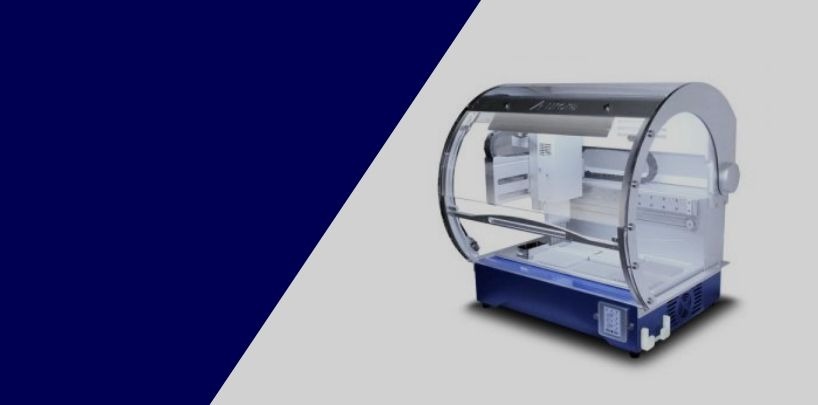
Peptide synthesis is a highly delicate and complex process that can be quite a time consuming and requires extreme attention to detail. The process of solid-phase peptide synthesis, commonly abbreviated SPPS, is very minuscule and complex. As such, many laboratories are turning to automated microarray printers to help streamline the process. Below are just a few of the many benefits of automating peptide synthesis and how doing so can improve your laboratory’s overall workflow and productivity.
Reduces error
Solid-phase peptide synthesis is a process that requires extreme attention to detail. When conducted manually, the observing analyst must closely monitor all steps in to ensure no elements become contaminated and that everything proceeds exactly as it should. Even the most fastidious analyst is only human—they may make mistakes that will compromise the entire experiment. Automating the solid-phase peptide synthesis process, however, negates the risk of human error almost entirely. This leads to fewer losses overall and increases the reliability and validity of results.
Reduces experimental costs
The cost of righting the mistakes made as a result of human error can sometimes be quite large and can significantly setback the project. Not only is it costly to fix such errors, but it also requires analysts to expel unnecessary time and effort on the project. By reducing the propensity for error via automating the solid-phase peptide synthesis process, laboratories can cut expenses and reallocate funds they set aside to fix such errors.
Increases research throughput
Another important benefit of automating peptide synthesis is how these automated workstations can streamline the entire process and increase research throughput. These automated workstations maximize the number of specimens analyzed on a given surface to increase the sample size. This, in turn, increases the accuracy of the experiment as a whole. Certain automated microarray printers, such as the VERSA 110, possess four SBS deck positions to accommodate larger experiments. These workstations can also accommodate a wider range of spotting volumes.
Increases productivity
With increased throughput and reduced likelihood of error, overall productivity improves. When there are fewer errors in an experiment, analysts can move forward with projects faster and will be better able to allocate their time and skills. Additionally, when an automated solid-phase peptide synthesis process, analysts can walk away from the protocol with full confidence that it will complete the job efficiently and correctly.


